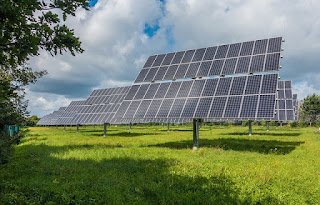
How Active Solar Power Can Revolutionize Your Energy Use
Active solar power is a game-changer in the world of renewable energy. But what exactly is it, and how can it benefit you? Let’s break it down.
Active solar power refers to systems that use mechanical devices to convert sunlight into usable energy. Unlike passive solar power, which relies on building design and materials to collect and distribute solar heat, active solar systems involve pumps, fans, and other equipment to enhance energy capture and distribution.
How Does It Work?
At its core, active solar power involves two main components: solar collectors and a storage or distribution system.
1. Solar Collectors: These are usually panels installed on rooftops. They absorb sunlight and convert it into heat or electricity. There are different types of solar collectors:
- Flat-Plate Collectors: These are the most common, consisting of a flat, insulated box with a transparent cover that captures and retains heat.
- Evacuated Tube Collectors: These are more efficient in colder climates, featuring tubes that prevent heat loss.
2. Storage and Distribution: The heat or electricity captured by the collectors needs to be stored or distributed. For heat, this might involve a hot water tank or a thermal storage system. For electricity, it typically involves a solar inverter, which converts the direct current (DC) generated by the panels into alternating current (AC) used by household appliances.
Real-Life Examples
- Residential Solar Panels: Many homes use active solar power systems with photovoltaic (PV) panels to generate electricity. For instance, a typical household solar panel system can reduce energy bills significantly and provide a reliable power source during outages.
- Solar Water Heating Systems: In places like Tucson, Arizona, solar water heaters are common. These systems use solar collectors to heat water for household use, reducing reliance on traditional gas or electric water heaters.
Impact on Our Self-Sustainable City
In our self-sustainable city project, active solar power plays a crucial role. By integrating solar panels and collectors into the design of each home, we not only reduce dependency on external power sources but also cut energy costs for residents. Solar energy helps us achieve our sustainability goals by lowering our carbon footprint and promoting the use of clean, renewable energy.
We’re excited to hear from you! Have you used active solar power in your home or community? What benefits or challenges have you experienced? Share your thoughts or questions in the comments below!
![Self-Sustainable City - Ramakrishna Surathu [Official Website]](https://blogger.googleusercontent.com/img/a/AVvXsEivh2bAyNCG-DxYf4p_lHLcFQx1i8MvbBv91UgzKqAFrNMhT8xW-fwxgNJTdtojgb9aYXiG9EdNYLo8tNmtaakyq-zmnaCeeUGMdpvJ8iOaVzd2tSKEC2UrUXzFJa952LPF-OngfPenpbFOj7b8AcbYtPGSng6xbGr-_NwEIRpXZg_QdKLGRMGeg5pWmtaQ=s1280)
No comments:
Post a Comment